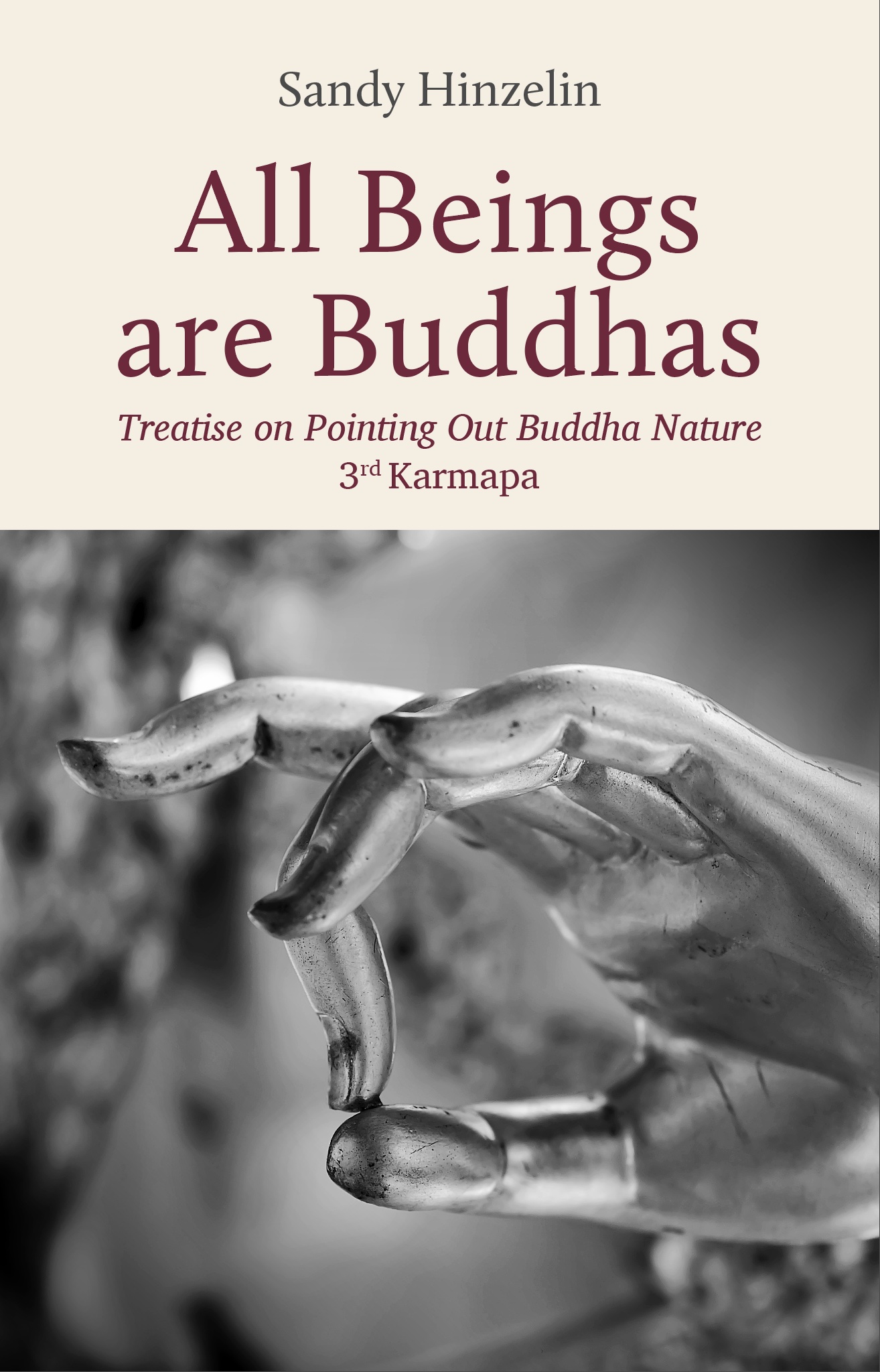
The benefits of discovering our true nature
The teaching on Buddha Nature first of all fulfills the function of encouragement, it points to another mode of consciousness that is possible for all. Buddha Nature can inspire us, because it sparks in us a sense of trust, there is a resonance. This trust is like a propulsor, it is a positive mental event fostering awakening[1].
This teaching also allows us to complete the concept of emptiness. Indeed, Buddha Nature gives indications on what consciousness realizes once it sees emptiness. Thus, Buddha Nature is a foundation for practice in the sense that it can be compared to a traveling map where different possible states of consciousness are indicated. This prevents an interpretation that is too personal on the nature of consciousness, or a stagnation at a certain level of consciousness thinking that it is the highest one. With these indications, the practitioner discovers what is possible to realize, which prevents them from being discouraged or held back by a less rich experience. If it is correct to envision the link between Buddha Nature and meditative practice in this way, then we understand better why the qualities of consciousness are mentioned so extensively. A consciousness is perfectly awakened to the only condition that all of these qualities are present[2].
This treatise on the 3rd Karmapa also shows us that Buddha Nature is not something that is abstract or unattainable. It must be understood from the process of perception, in each moment. Each of our experiences are based on the continuum of pure consciousness, unsurpassable, which is quickly covered at the ordinary level by different mental elements, thus hiding their source. Consequently, Buddha Nature indicates that grasping is not the only way. Either our perception stays at the surface and trusts its mental formations; either it turns inwards to ascend towards the origin of its perception and develop a penetrating vision. This “ascension” is possible for all in the sense that the veils are adventitious. In contrary to Buddha Nature which is a continuum of awakened consciousness without beginning nor end, ordinary consciousness is a continuum of consciousness that is based on ignorance and can have an end[3]. On one hand, our potential is stimulated, developed, and in this case, we access profound human experiences that can take multiple shapes. On the other hand, we continue to live in a world of images, devoting ourselves to living inauthentically, which is to say in a world that does not really have true meaning.
Illusions marks a rupture with the absolute. Experience is far more profound, but ordinary consciousness tends to consider true what appears at the surface, it relies only on what is at the end of the chain. And at the end of the chain are the grossest elements, such as thoughts, emotions, “objective” knowledge… it is these different elements that rule the experience of ordinary consciousness. Being a Buddha in nature implies that the consciousness is richer and simpler than what it identifies with most of the time. Consciousness is not only thoughts and emotions, consciousness’ nature is much vaster, it is emptiness and luminosity.
The way that we understand or consider the human being determines our way of life. Buddha Nature is therefore an essential teaching, because it shows the possibility of an existence different from the saṃsāra, it offers us a refuge, from which a non-conditioned, authentic existence can bloom – one that fits us and is beneficial to all.
Resolving doubts about the ground brings conviction in the view.
Then keeping one’s awareness unwavering, in accordance with the view, is the subtle pith of meditation.
Putting all aspects of meditation into practice is the supreme action.
The view, the meditation, the action — may there be confidence in these. Aspiration Prayer of Mahāmudrā of Definitive Meaning, Stanza 8.
Sandy Hinzelin, All Beings are Buddhas, Rabsel, 2023, p.166-168.
[1] In the Gateway to Knowledge, trust is defined as a beneficial movement of consciousness that supports determination (Gateway to Knowledge, vol.1, 1.47 : dad pa ni yang dag pa’i gnas la dang ‘dod yid ches pas te ‘dun pa’i rten byed pa’o).
[2] Another possible hypothesis consists in thinking that the qualities are described by thousands so that consciousness does not lock itself onto a point of reference which shoud be reached.
[3] The inseparability of knowledge and emptiness is permanent, however, the activity of the eight consciousnesses is impermanent (NT, Stanza 37-38).





